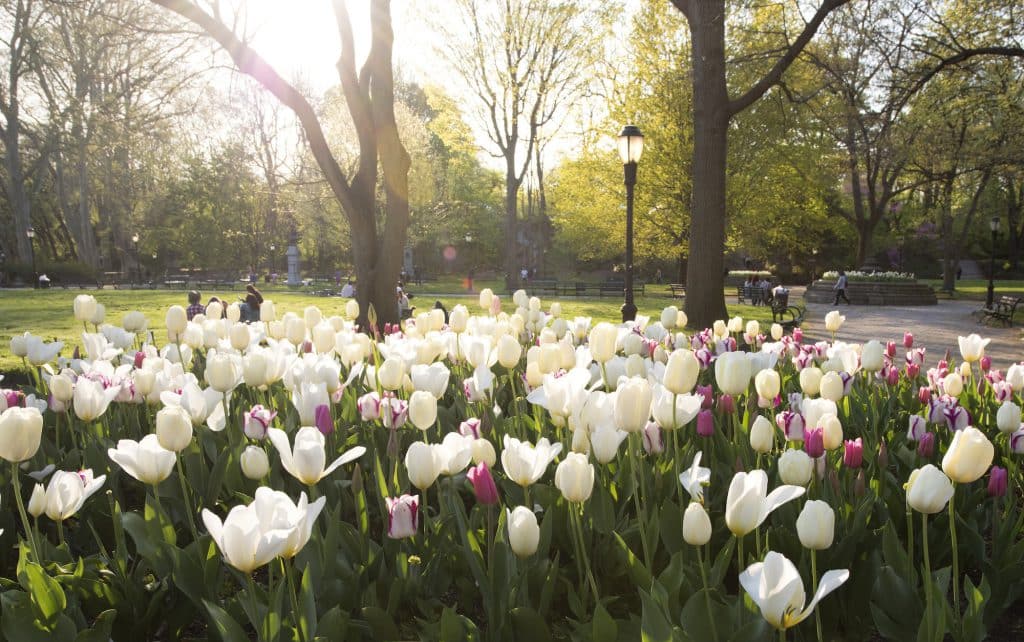History of Lefferts Historic House
Lefferts Historic House is an 18th-century farmhouse that features a working garden, historic artifacts, and indoor and outdoor exhibits. The museum focuses on the lives of the people that lived and worked the land, especially the resistance and resilience of the Indigenous people of Lenapehoking, whose unceded lands the house rests upon, and the Africans enslaved by the Lefferts family. Through hands-on experiences, cultural performances and imaginative play, visitors learn about the foundational histories of Brooklyn and their relevance to the vibrant and diverse communities of the borough today.
Prospect Park Alliance and the Historic House Trust of New York City jointly operate and preserve this important piece of New York City history. One of only a few remaining farmhouses from the Village of Flatbush, and a New York City Landmark, Lefferts Historic House provides the public with a connection to Brooklyn’s past.
What is now Flatbush has long been a hub of commerce and culture. For centuries, Lenape farmers grew the Three Sisters (corn, beans and squash) on this land, and Lenape artisans produced prized wampum beads that were traded across the continent from the rich shellfish to be found in today’s Jamaica Bay. Flatbush Avenue, where Lefferts Historic House is sited, is an ancient Lenape road.
European settlers under the direction of the Dutch West India Company seized what became Flatbush by force in 1645. Following this battle, the Lenape were pushed south and founded the town of Canarsie, and challenged the seizure of Flatbush for decades. European settlers eventually forced many local Lenape further east to Long Island and west into New Jersey and Pennsylvania, and even as far away as Oklahoma, Wisconsin and Canada. Those who remained, and others now returning to their ancestral land, continue to steward this region, leading the fight to preserve the region’s ecosystems and confront climate change.
Dutch colonists claimed and cultivated these seized lands through the forced labor of enslaved Africans. This land and labor produced the food and trade goods that built the economies of Kings County and New York State. The Lefferts family began settling in what would become Flatbush in the 1680s. The wealth they extracted from the land and people they purchased enabled the Lefferts family to build a large wood-frame farmhouse and accumulate thousands of acres of property across the region.
Africans enslaved by the Lefferts family and others resisted their oppression and built fulfilling lives for themselves as best they could despite their brutal treatment. Africans enslaved by the Lefferts family participated in the slave rebellions that rocked New York in the Colonial Period. Africans enslaved by the Lefferts also likely helped create a unique African New York culture through annual festivals such as Pinkster Day, when African New Yorkers gathered to reconnect with family, hold drumming competitions and elect leaders.
In 1776, British soldiers suppressing the American Revolution burnt down the Lefferts family’s Flatbush homestead. After American independence, the Lefferts family commissioned a new farmhouse to be built from the burnt timbers of the family homestead. This house was likely rebuilt with enslaved labor. It remained in the possession of the Lefferts family for over 130 years until 1918, when it was moved from its original location on the corner of Flatbush Avenue and Maple Street into Prospect Park to make way for a large apartment building.
Ongoing research suggests that at least 25 people were enslaved at Lefferts Historic House between 1783, when the house was completed, until 1827 when New York State abolished slavery. The people enslaved by the Lefferts family largely ran the farm and managed household affairs. Many continued to work on the farm and in the house after they gained their freedom. Prospect Park Alliance is currently trying to identify and contact descendants through our ReImagine Lefferts Initiative, which is re-envisioning the mission and programming of the museum to serve as a community hub and a space for dialogue in today’s Brooklyn.
The 25 people enslaved at Lefferts Historic House between 1783 and 1827 and their descendants reshaped New York culture and politics. They likely helped found the African Methodist Episcopal churches and African mutual aid societies of Brooklyn and Flatbush in the early 19th century. They also likely supported early Black newspapers and political action groups that helped end slavery in New York and nationally and challenged racial and Jim Crow segregation and discrimination. The musical and dance traditions they helped create continue to sooth and entertain.
Learn more about the history of the Indigenous and Africans in Brooklyn:
- Public History Project: Indigenous Presence in New York and New Jersey
- Flatbush African Burial Ground Coalition: Legacy of Enslavement in Flatbush
- Center for Brooklyn History: Lefferts Family History
- Center for Brooklyn History: Anti-Slavery Activism in Brooklyn
- Weeksville Heritage Center: African American Life in Brooklyn in the Aftermath of Slavery

